Shanghai Port occupy first place in the Chinese Super League after 25 rounds, having accumulated 66 points; this places them just two points ahead of their fierce competition, Shanghai Shenhua.
Defensively, Shanghai Port are not the league’s standouts.
They have conceded 23 goals, giving them the second-best defence with a significant gap compared to Shanghai Shenhua, who have conceded only 15 goals, a difference of eight goals.
In contrast, Shanghai Port boast the strongest attack in the league, with a substantial lead over their competitor, Shanghai Shenhua.
Shanghai Port have scored 83 goals, 19 more than Shanghai Shenhua — this highlights the formidable strength of Shanghai Port’s offensive capabilities.
One of the key factors behind their exceptional attacking strength is their proficiency in set-pieces, particularly corners.
They are the highest scorers in the league from corner kicks, with 15 goals, significantly ahead of Henan, who are in second place with nine, followed by Shanghai Shenhua with eight.
Explore Shanghai Port’s 2024 set-piece tactics in this in-depth tactical analysis in which we will show how Shanghai Port leverage corners to create scoring opportunities.
Our analysis provides an analysis of set-piece specialist Oscar’s pivotal role and the strategic innovations driving Shanghai Port’s corner success in the Chinese Super League.
Oscar,
theformer
Chelseaplayer, is the top assist-provider in the league with 17 — eight of them from set-pieces, with a seven-assist difference above the second one, Matías Vargas, who is the secondary taker of Shanghai Port, which shows their brilliance in set-pieces.
The Area Ahead Of The Near Post
The first thing we should start with is their permanent desire to win the first touch, surprisingly in the area ahead of the near post, exploiting the light but excellent cross by Oscar from the left or the right while also having Matías Vargas as a taker from the right.
In the photo below, it is clear that the opponent defends with two zonal defenders (yellow) while the rest are man markers.
The first thing they do is to try to drag the first zonal defender out of his position to vacate the targeted area by asking the short-option attacker to get closer to the taker.
Trying to convince the opponent that he will receive a short pass, this motivates the first zonal defender to go forward to help prevent a probable 2-v-1 superiority over the short-option defender.
After that, the targeted player, in pink, goes to the targeted area with the help of his teammate (blue), who blocks his marker and frees him up, a technique known as a screen.

As shown below, the plan works so the targeted man comes freely from the blind side of the only zonal defender left who can’t defend this huge area alone.
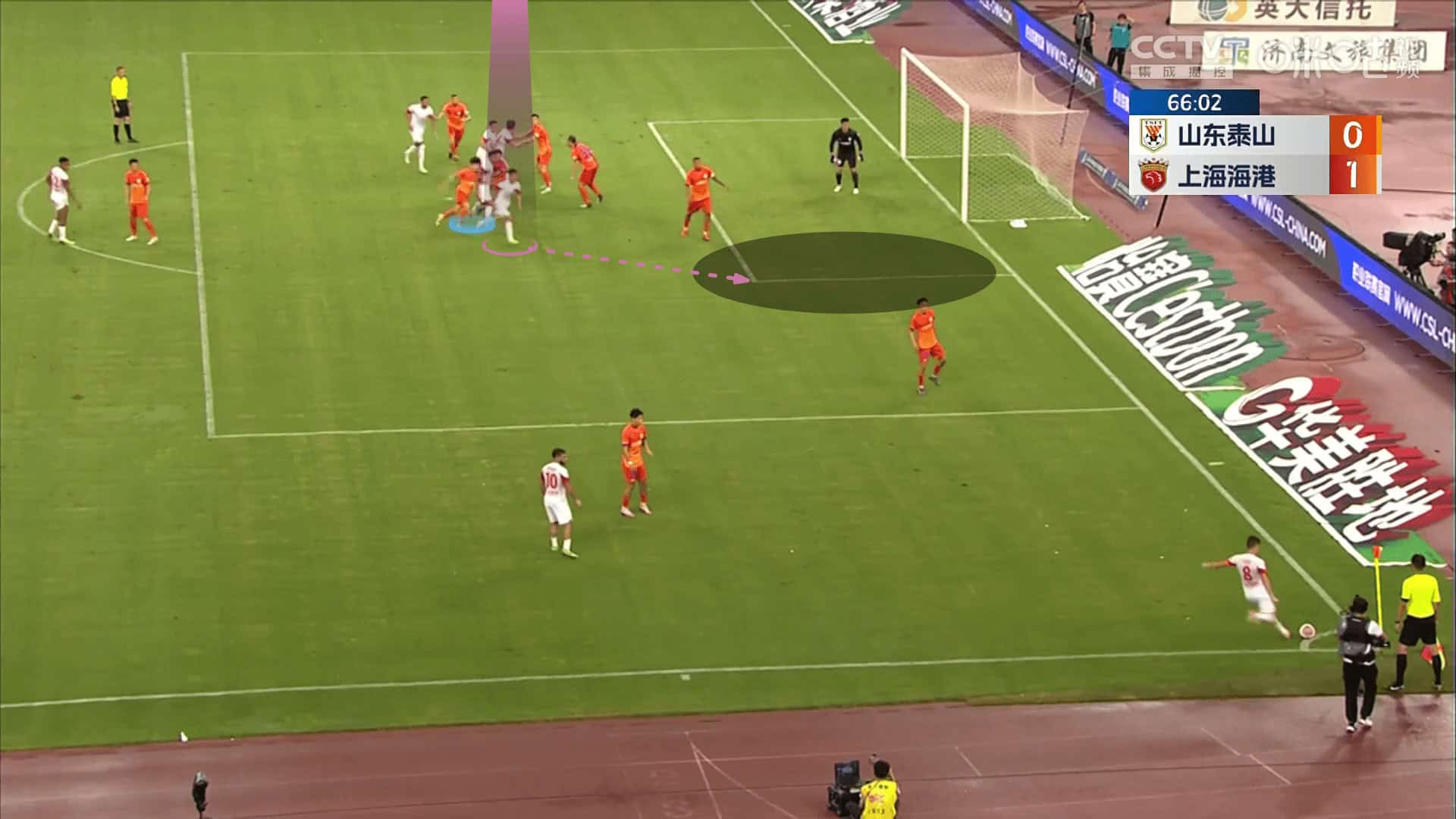
The plan ends with a goal.

Going back before sending the cross, we want to highlight an important thing they always do, which is sending the cross quickly.
At the same time, the targeted player acts as if he is going back to the penalty spot to start the routine, putting his hand around his waist.
Still, he turns around suddenly to receive the mid-level cross, which doesn’t give the defenders — especially his man marker — the time to react.
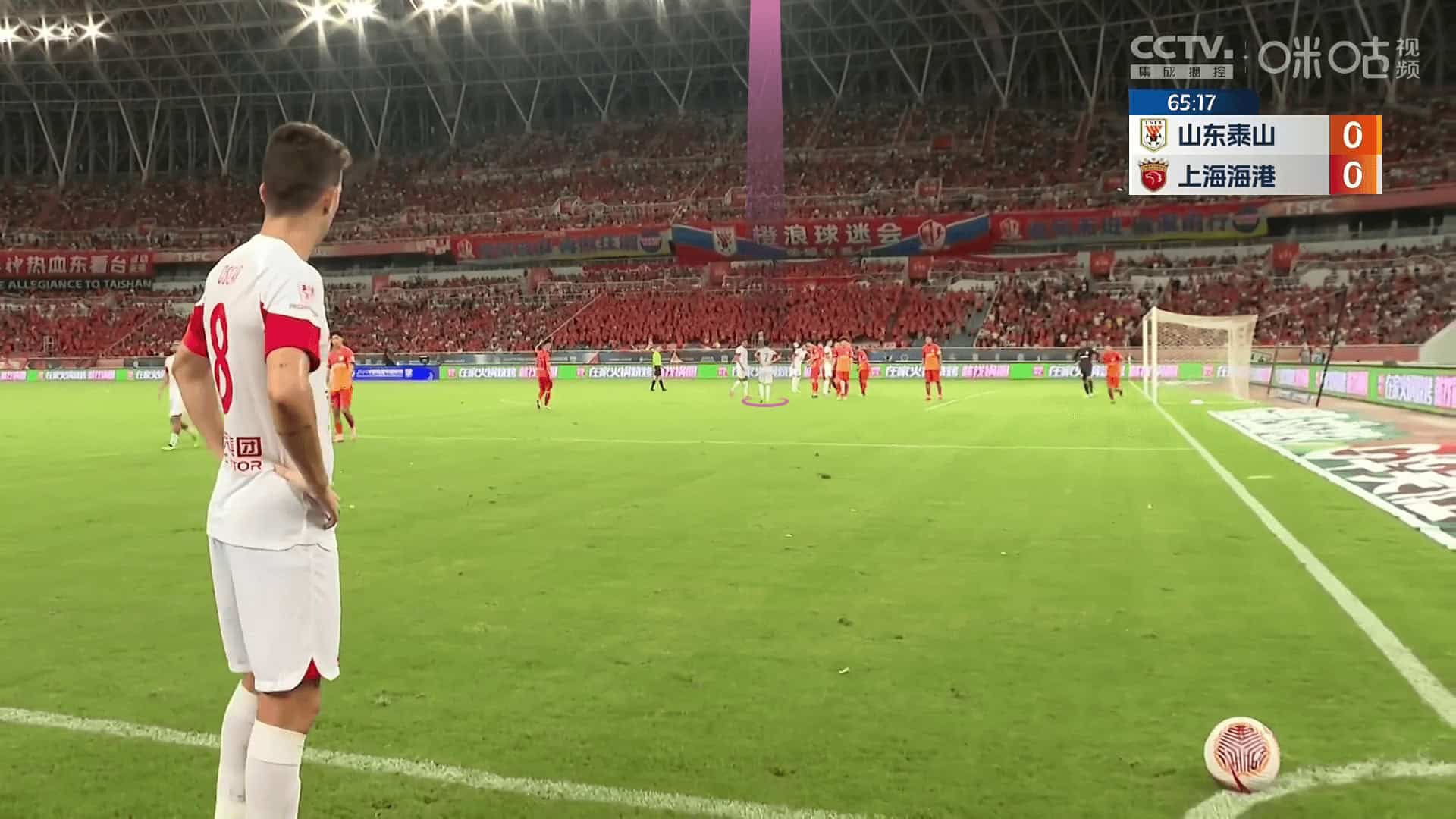
They do this general idea in so many forms with high or low ground crosses.
Starting with high crosses by which they aim to steal the first touch early ahead of the near post near the vertical edge of the six-yard to flick the ball toward a teammate who waits for the cross, framing the goalmouth.
In the photo below, the opponent defends with two zonal defenders (green), while the rest are man markers.
The two attackers (yellow) want to block the two zonal defenders, preventing them from going forward to get the first touch ahead of the near post.
At the same time, the pink-targeted player runs in a curved way around his teammate (blue), who pushes his marker toward the targeted player’s marker, slowing him down and not allowing him to follow the targeted player.
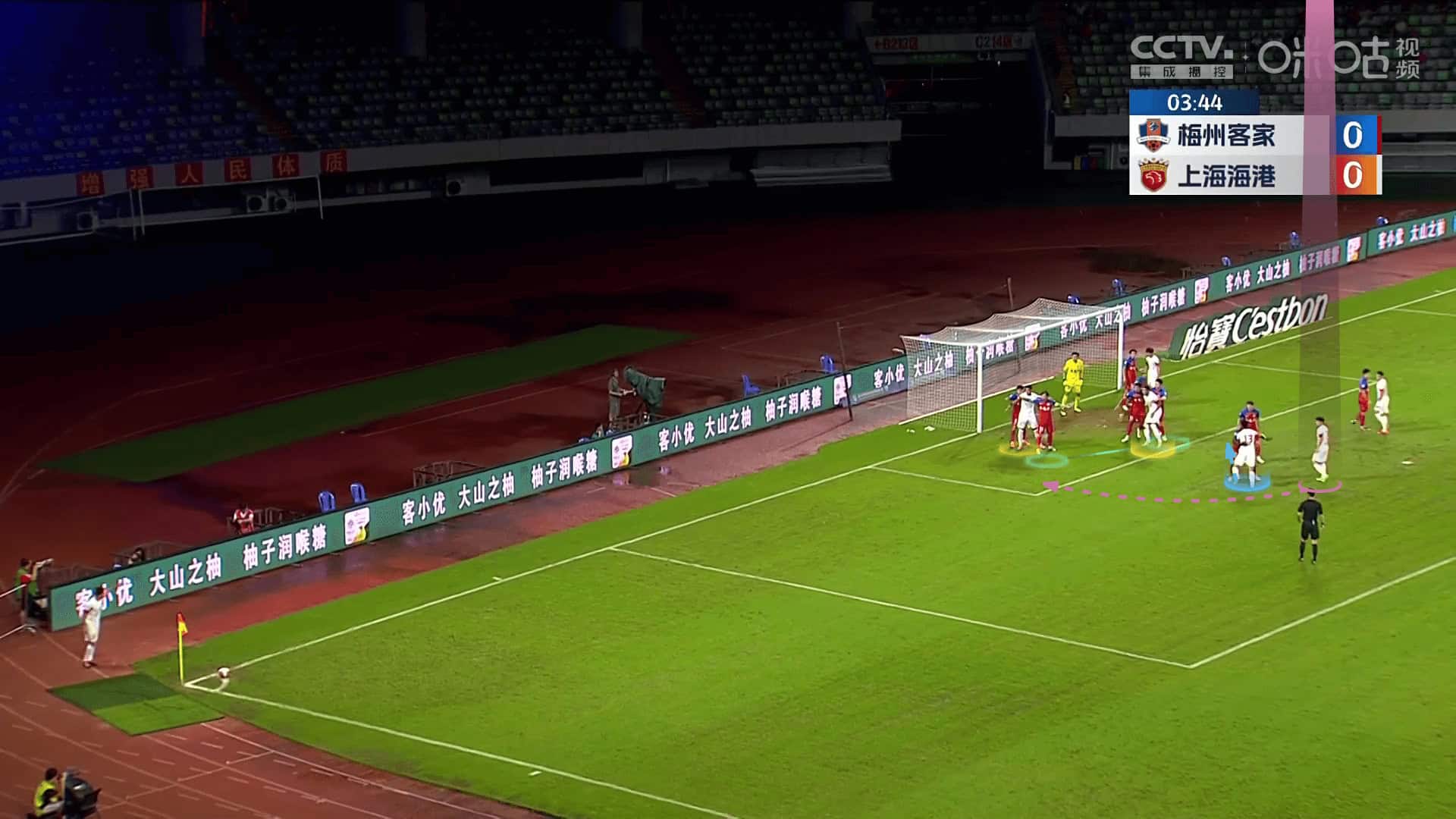
The roles of the two players in yellow and the player in blue are illustrated below, while the player in orange starts to run late on the defender’s blind side to get the flicked ball.
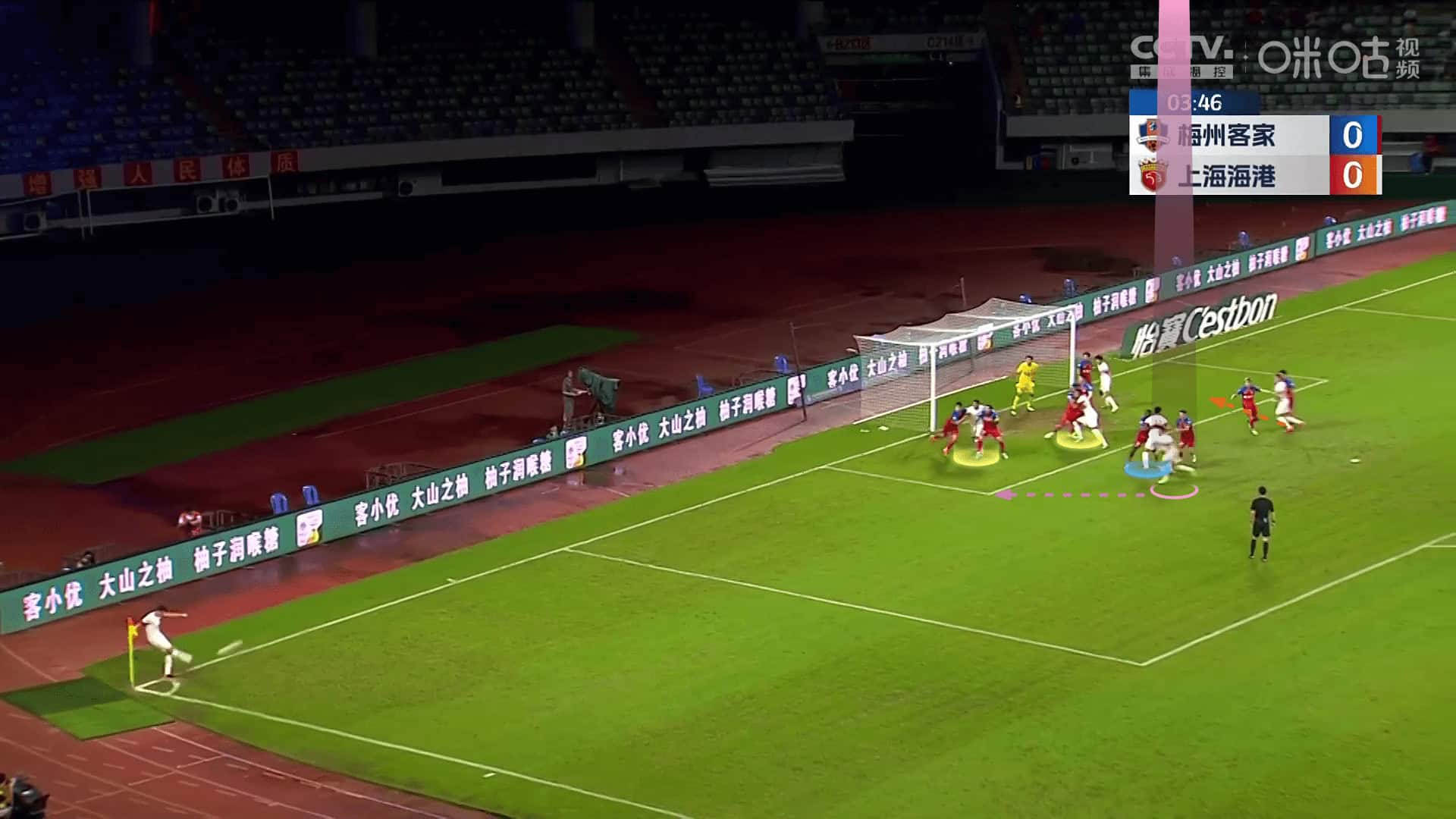
The plan works, and the first targeted player gets the first touch while the other players wait in the six-yard, spreading all across the framed goalmouth.
However, this time, they weren’t lucky because the flick wasn’t accurate toward the six-yard box.
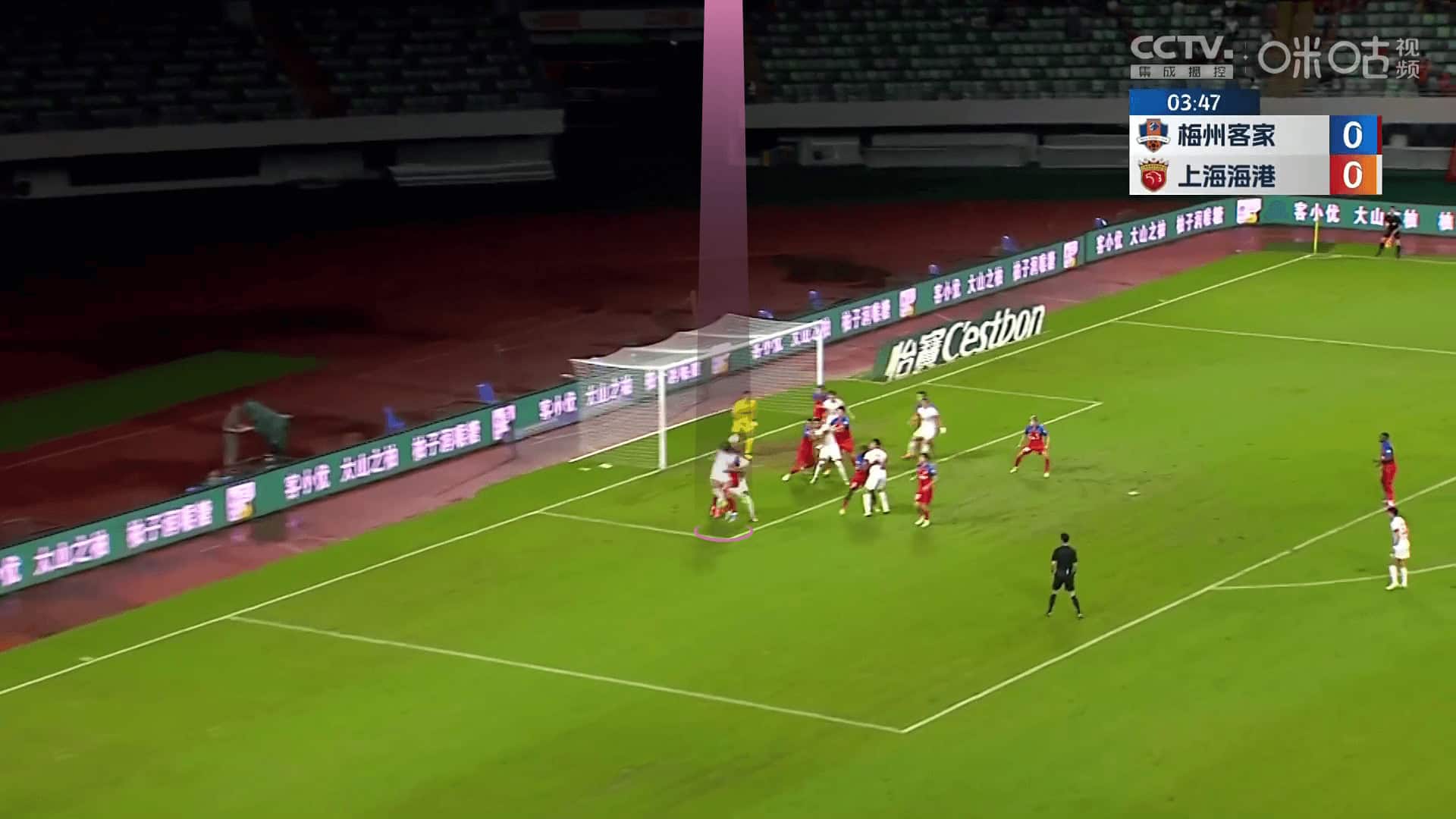
Going to the low-level cross, they implement similar ideas aiming to turn the fight into a race to the ball.
In the photo below, the attacker in yellow has the same role of blocking the first zonal defender.
At the same time, the player in pink targets the same area but by a low-level cross, which means that if he starts to run suddenly with separation, the competition is turned into a race to the ball.
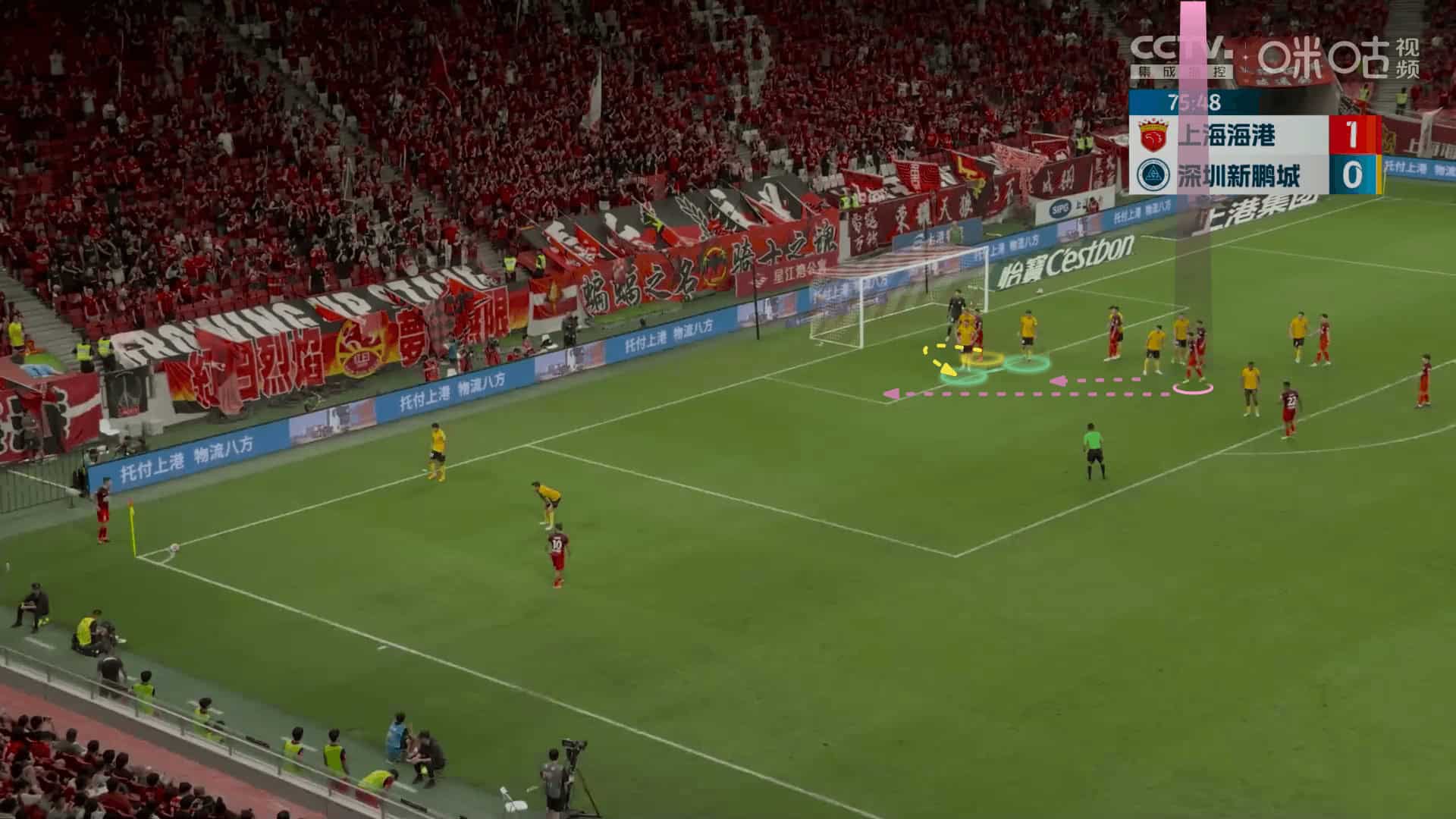
The plan worked, and it was a dangerous chance close to the post featuring a slight touch, as shown below.
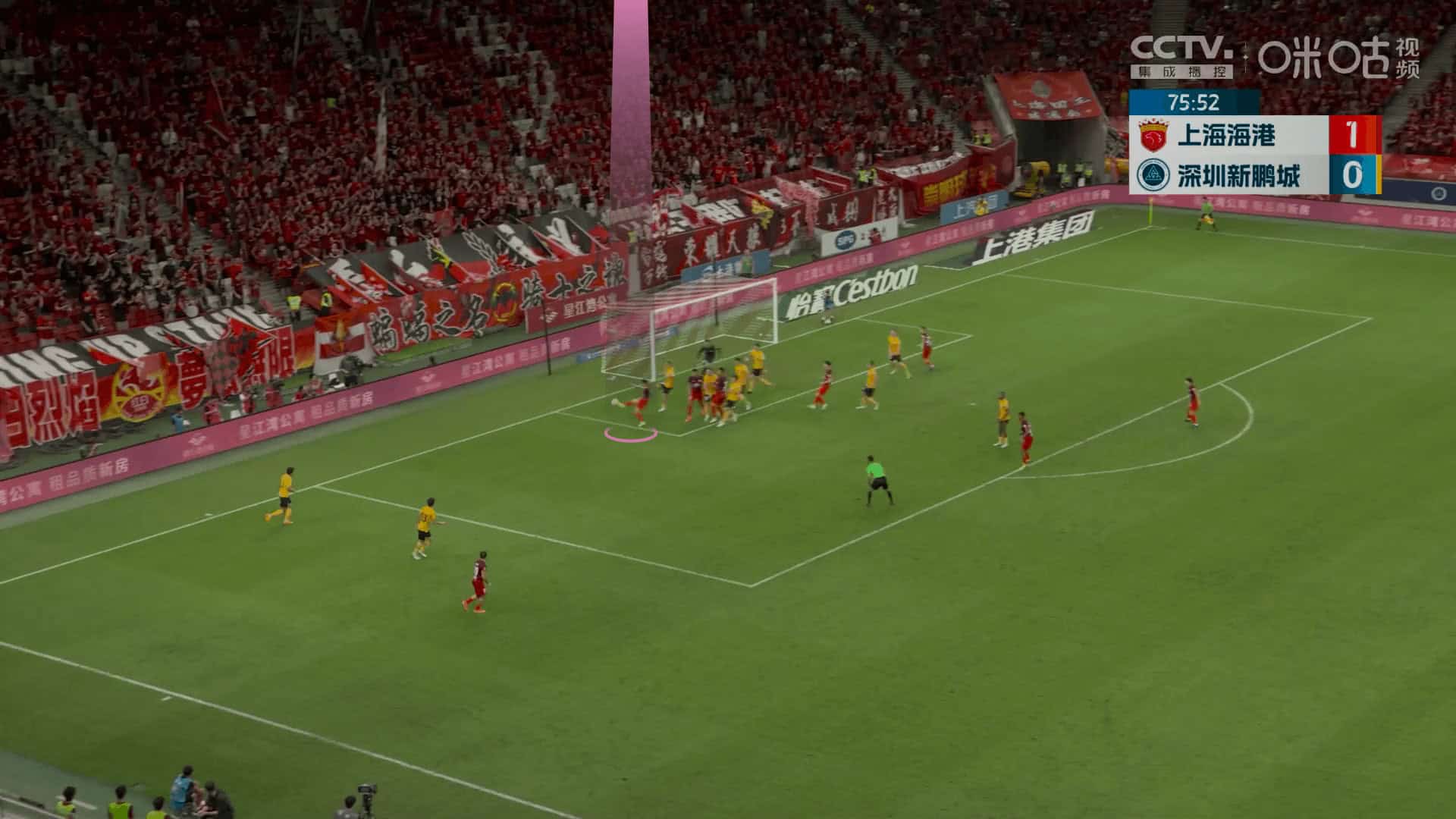
Fake Flicks
In the photo below, the opponent defends with two zonal defenders, six man markers, a short-option defender and a rebound defender who starts deep to close the direct pass toward the penalty spot at first.
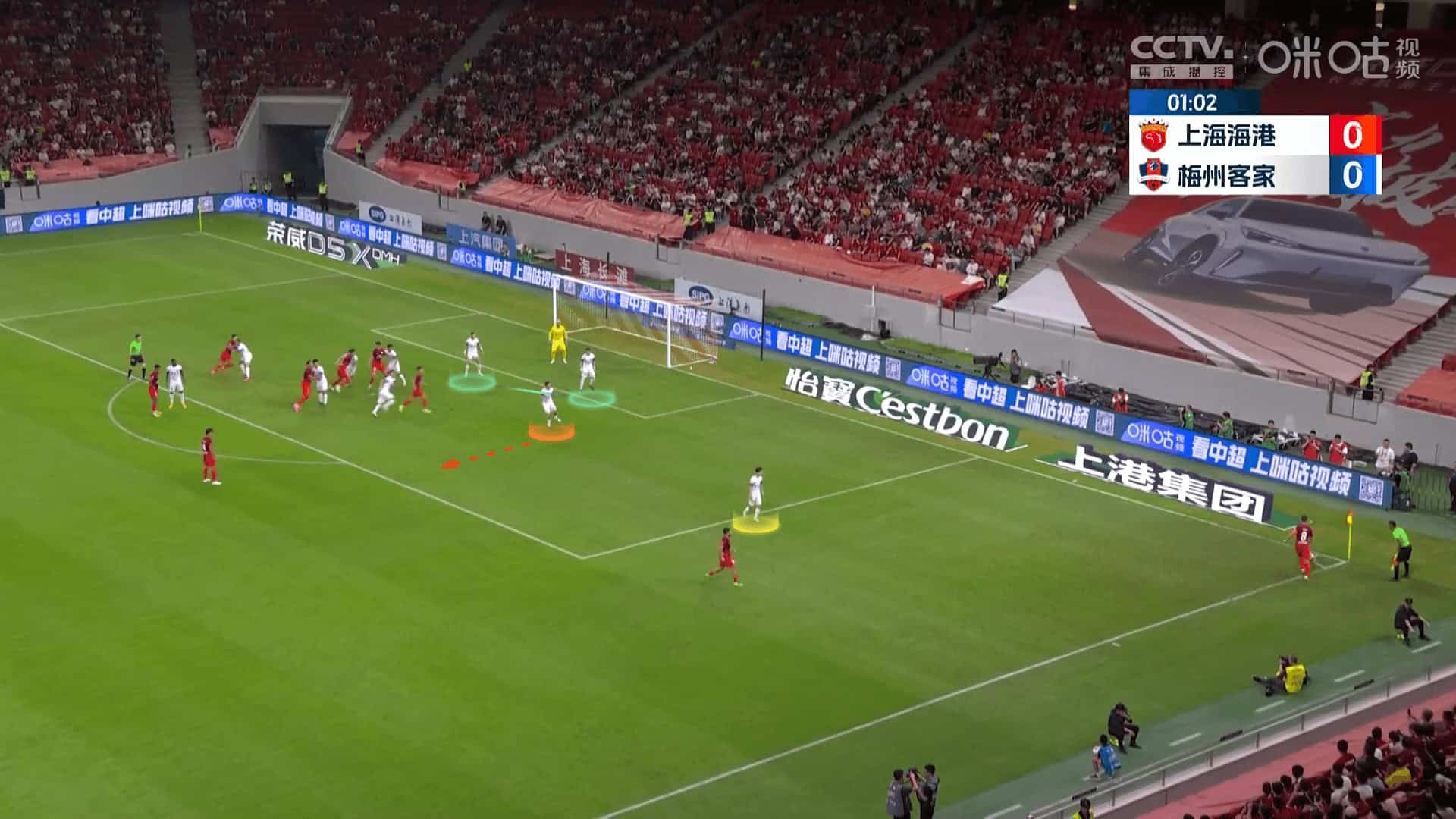
This time, they want to drag the first zonal defender out of his position, convincing him that they want to flick the ball from the area ahead of the near post, but the fact is that they aim for the area behind him — the near post itself.
The attacker in green makes a deceptive run, acting as if he would flick the ball and dragging the first zonal defender out of position, while the pink-targeted player goes for the area behind him with the help of his teammate in blue, who blocks his marker — another screen.
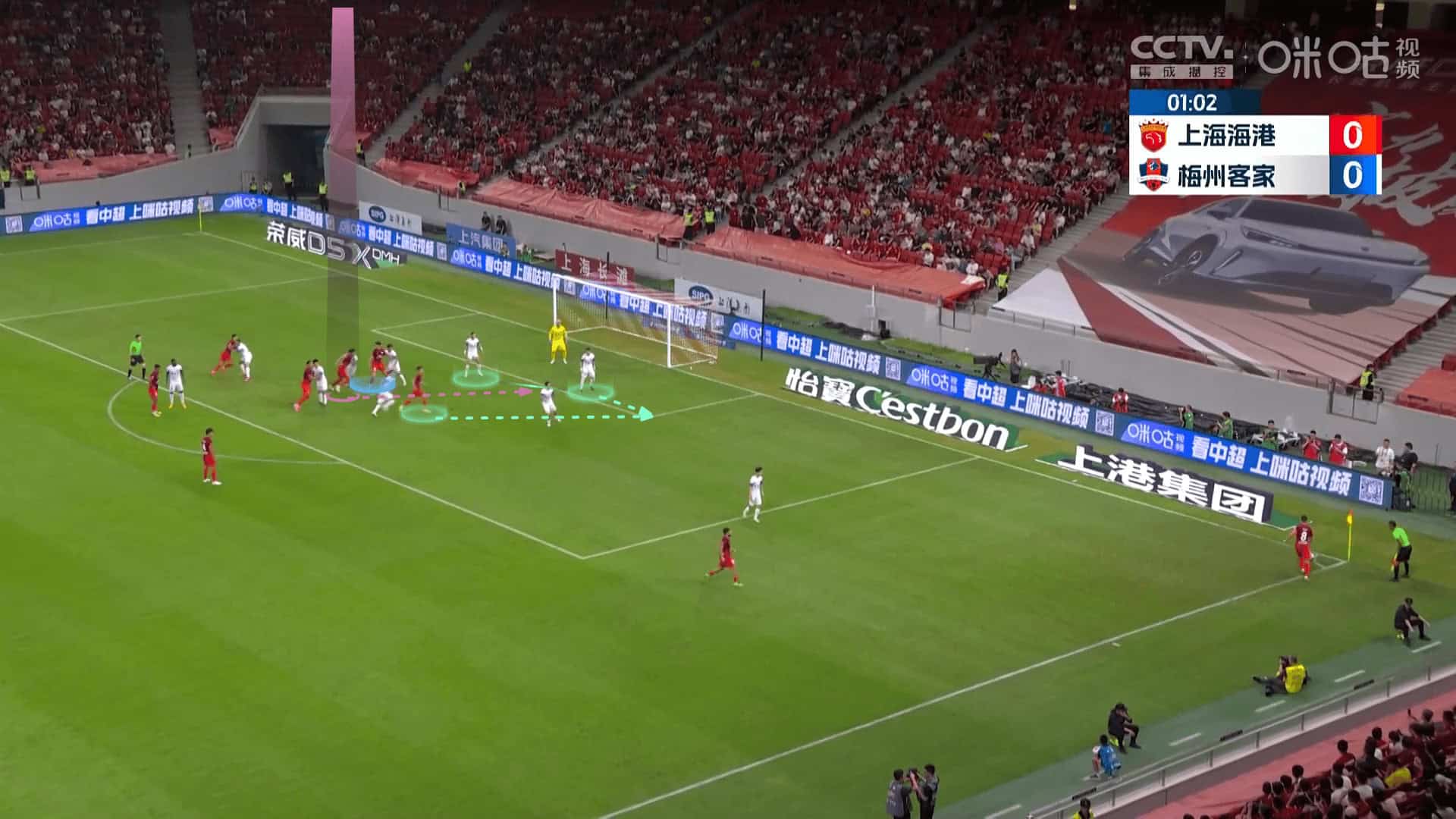
The screen and fake run are shown below, while they also keep using the run toward the far post to frame the goal in case the first targeted player can’t get to the ball directly, or the goalkeeper saves it at the far post.
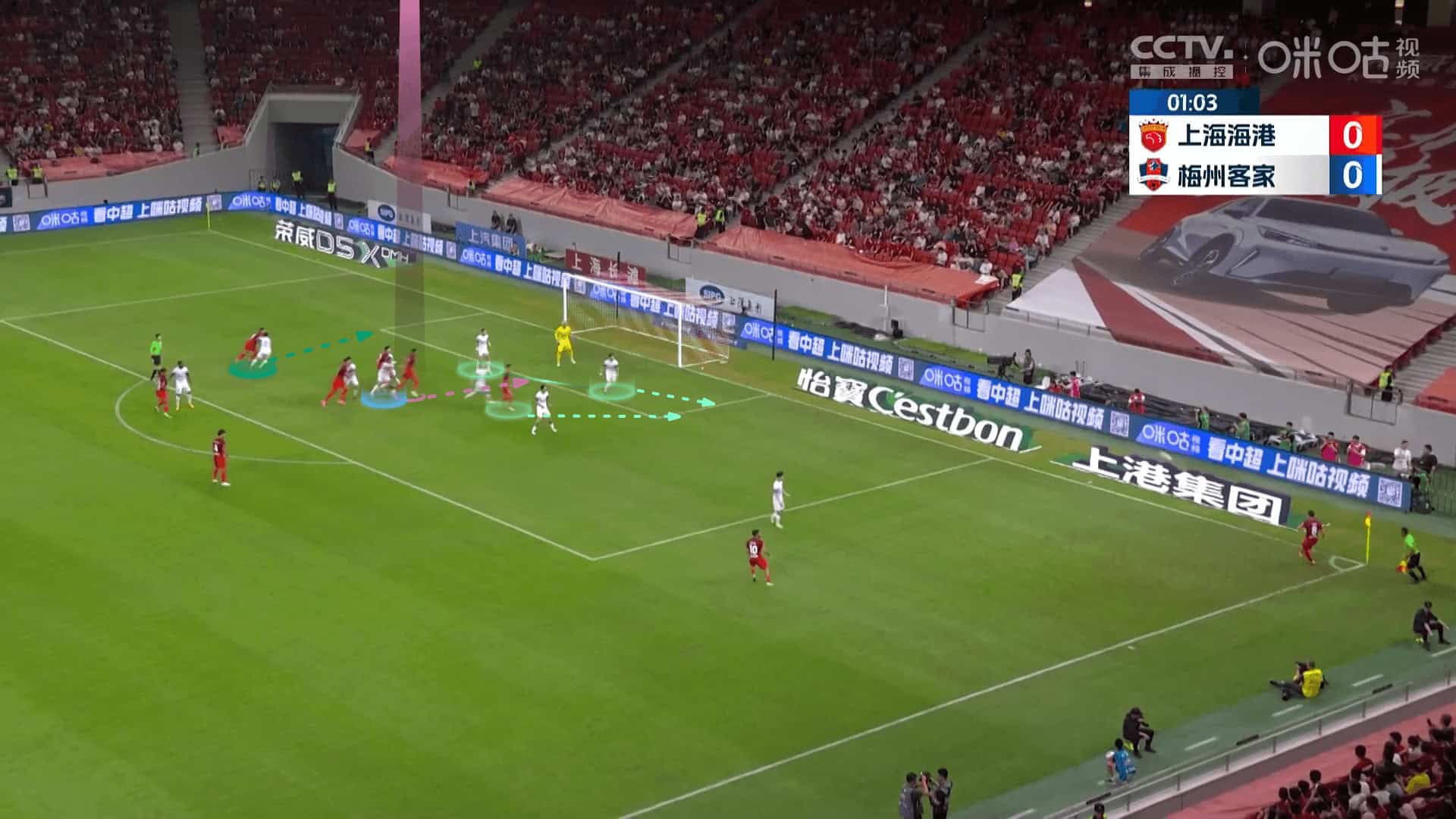
The plan works excellently, but the goalkeeper heroically saves.
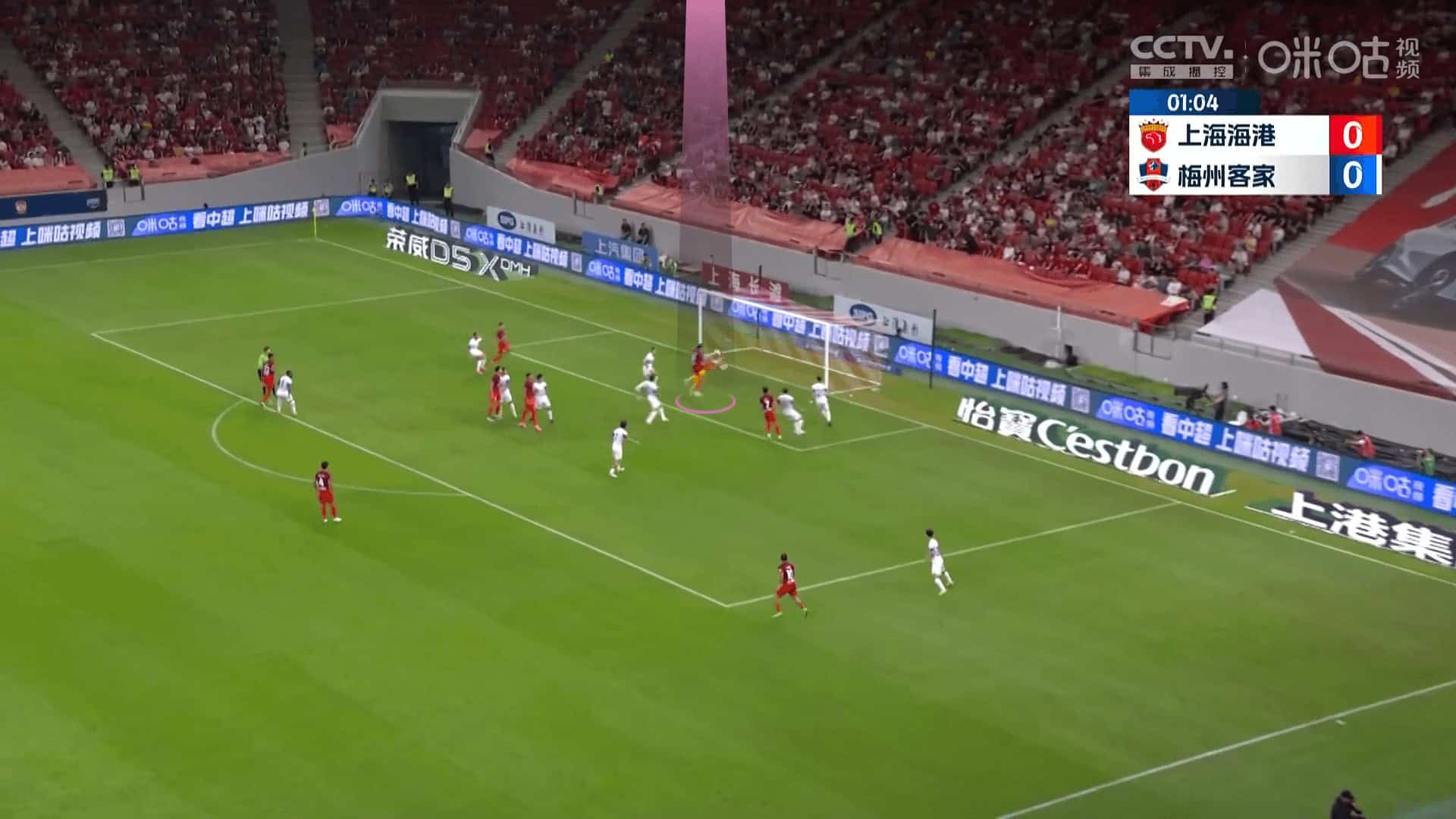
Short Corners
They also have a clear way to start the corner without a close short-option attacker asking him to stand near the corner of the box and then suddenly get closer to receive the ball while the attacker (green) fixes the rebound defender (green).
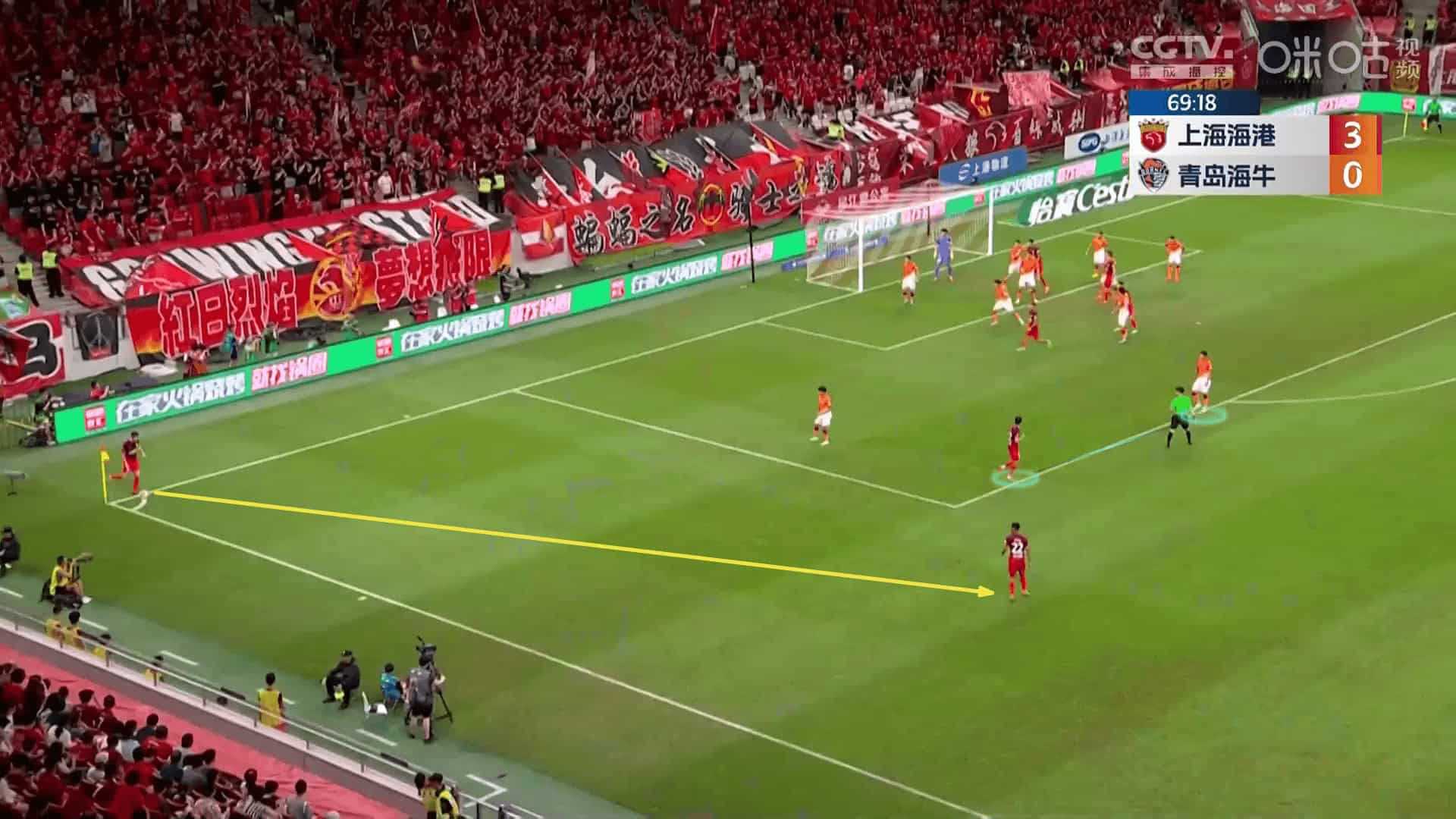
The good thing about this routine is that they can create a sudden 2-v-1 situation, meaning that Oscar will receive the ball in a large area while the defender (pink) who comes to help from the box has a long way to go.
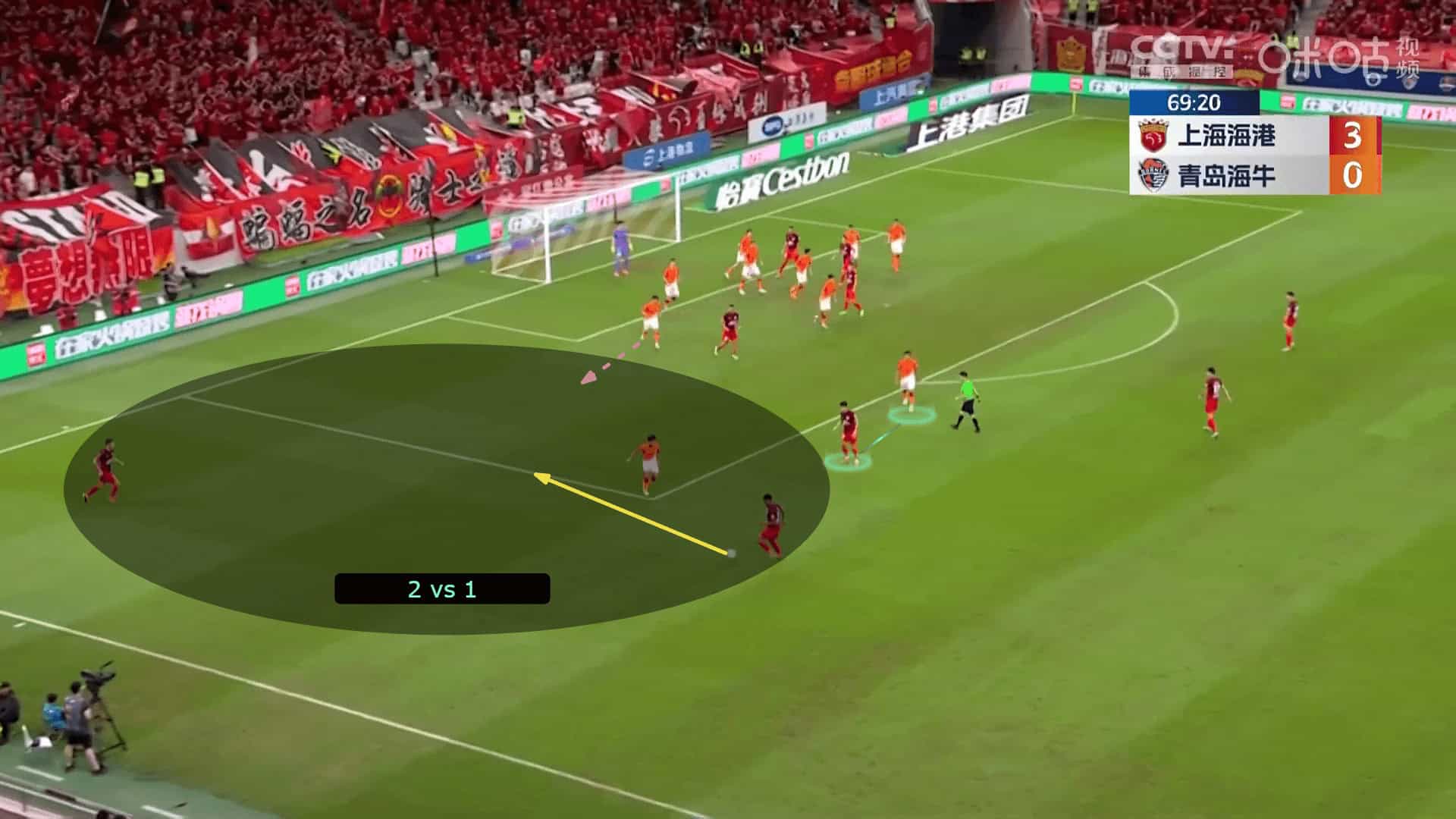
When he comes, he is forced to face a skilful player like Oscar in a large surface area — not favourable for the defender.
This means that Oscar can dribble inside to shoot or outside to send a cross.
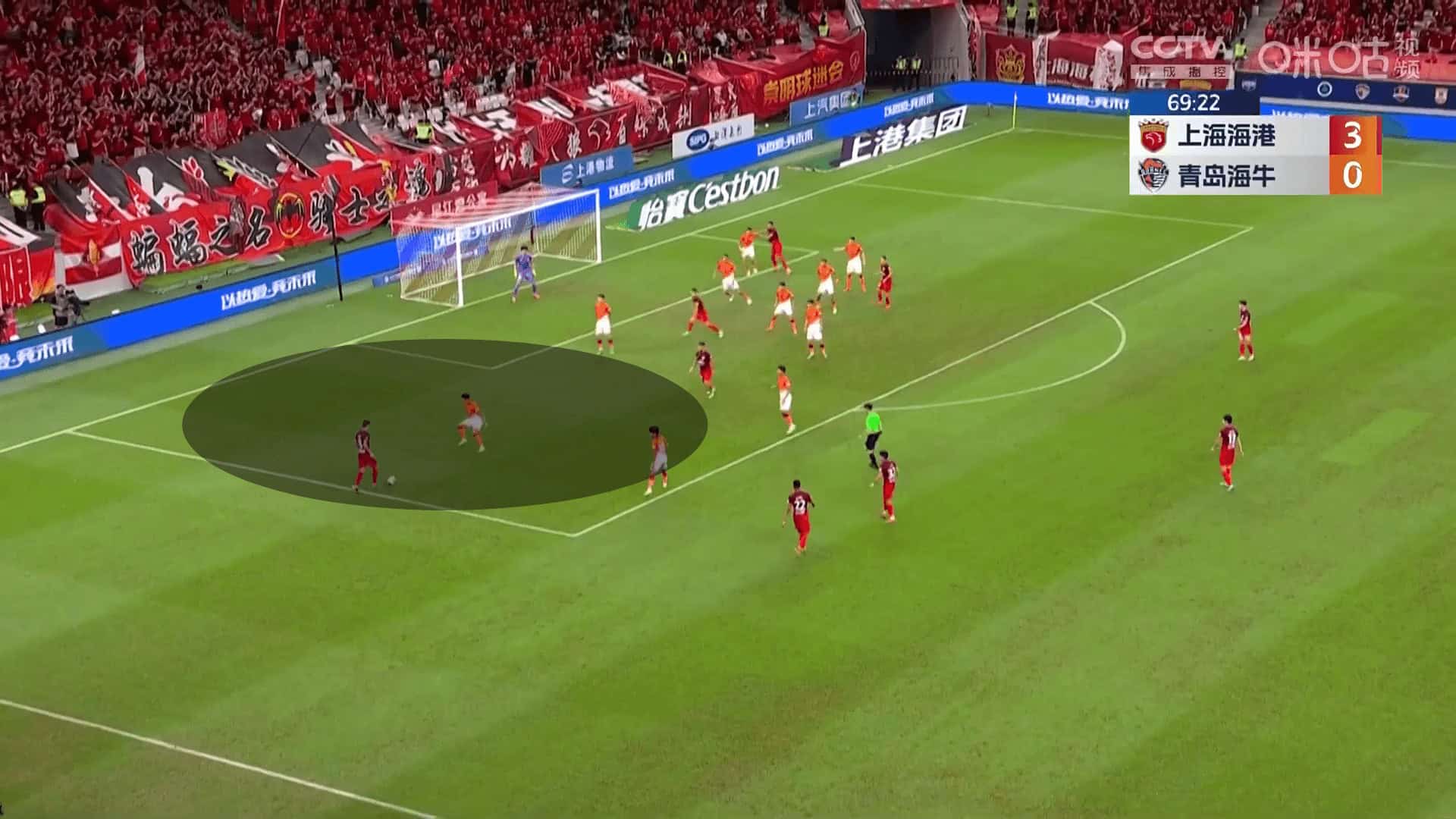
He went for the latter and pulled it off in quick fashion, sending a cross from a dangerous position, as shown below.
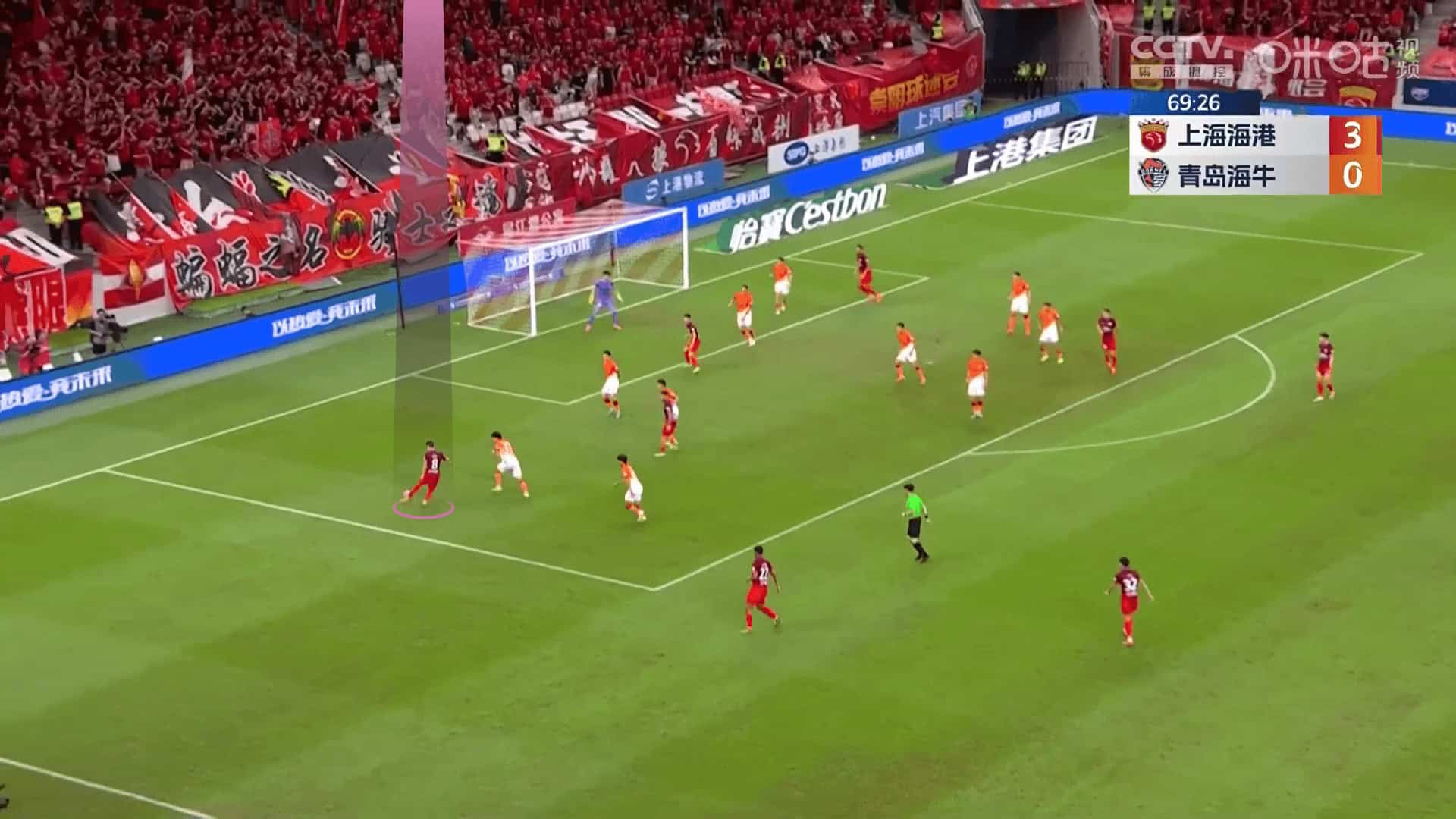
Targeting The Edge Of The Box Directly
Having a player like Osacr means that you can ask him to send a cross to a far point at a certain level and power, which is clear below.
Opponents sometimes ask the rebound defender (green, in this case) to get deeper and closer to the short-option defender so that he can join him quickly to avoid the previous situation or for several other purposes, such as cutting the direct passing lane to the penalty spot or helping the man markers.
In these cases, Oscar can easily target the rebound attacker with a very accurate cross, in level and power, to help him shoot the ball directly from the first touch.
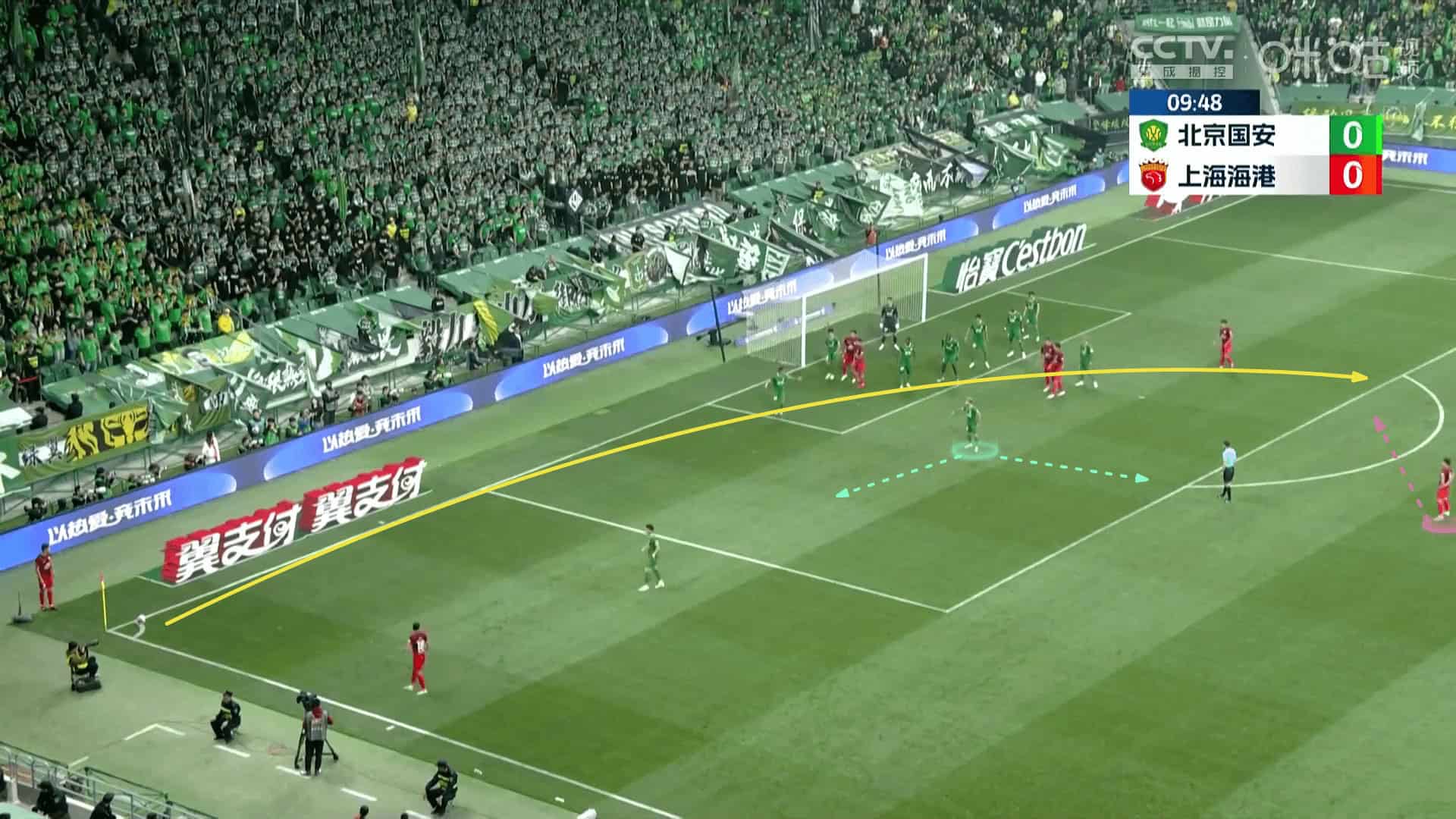
The plan works, and the result is a goal.
We should mention that this wasn’t the only case in which they did that; it’s a trend in their game by which they consistently create dangerous chances.
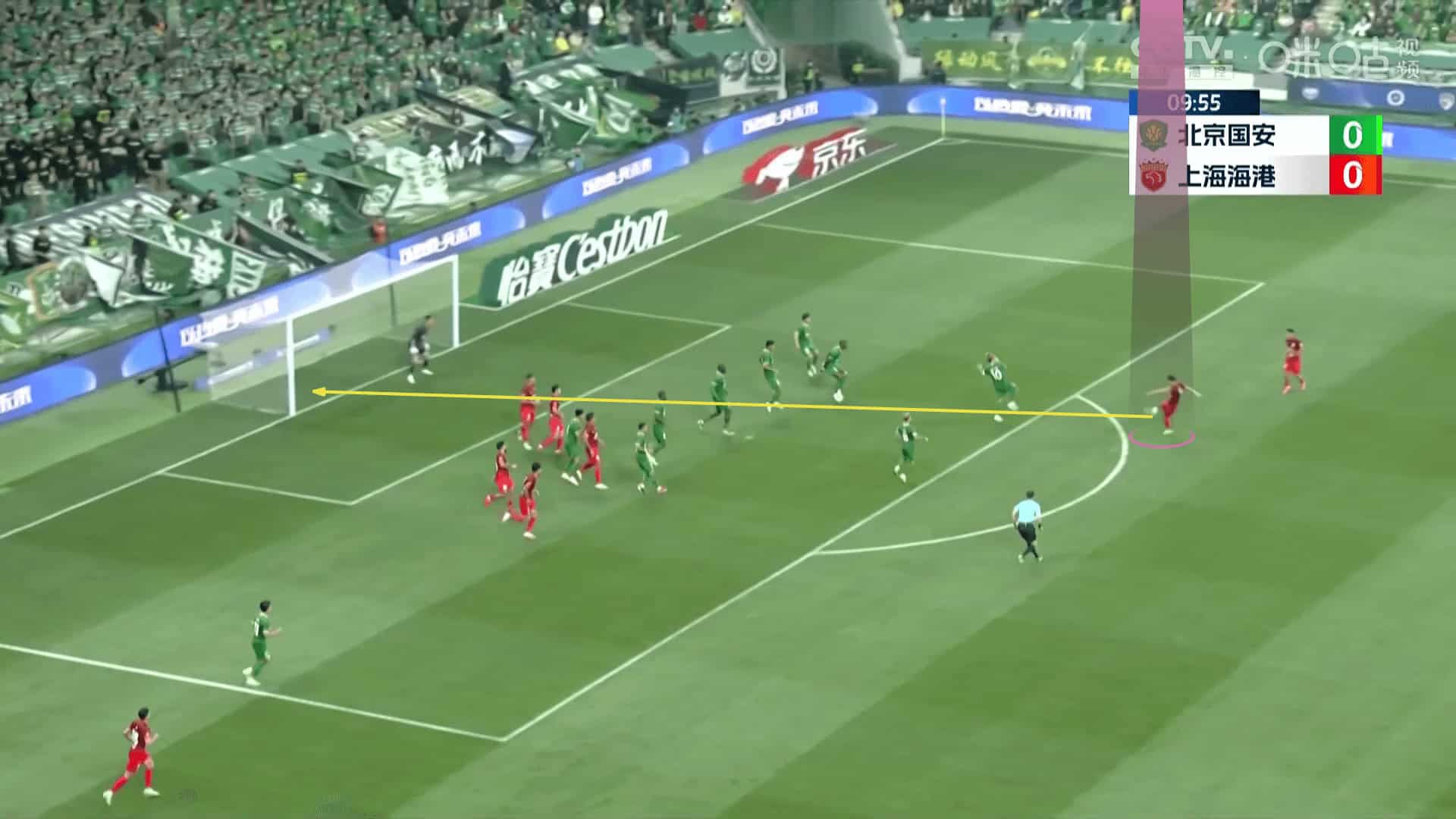
Oscar can also deal with any other change, like dispensing the rebound defender to have two ready short-option defenders and enough markers inside the box.
In these cases, he has a clear ability to send a very accurate ground pass between the two short-option defenders to target the rebound attacker directly inside the box in an easier way to score a goal.
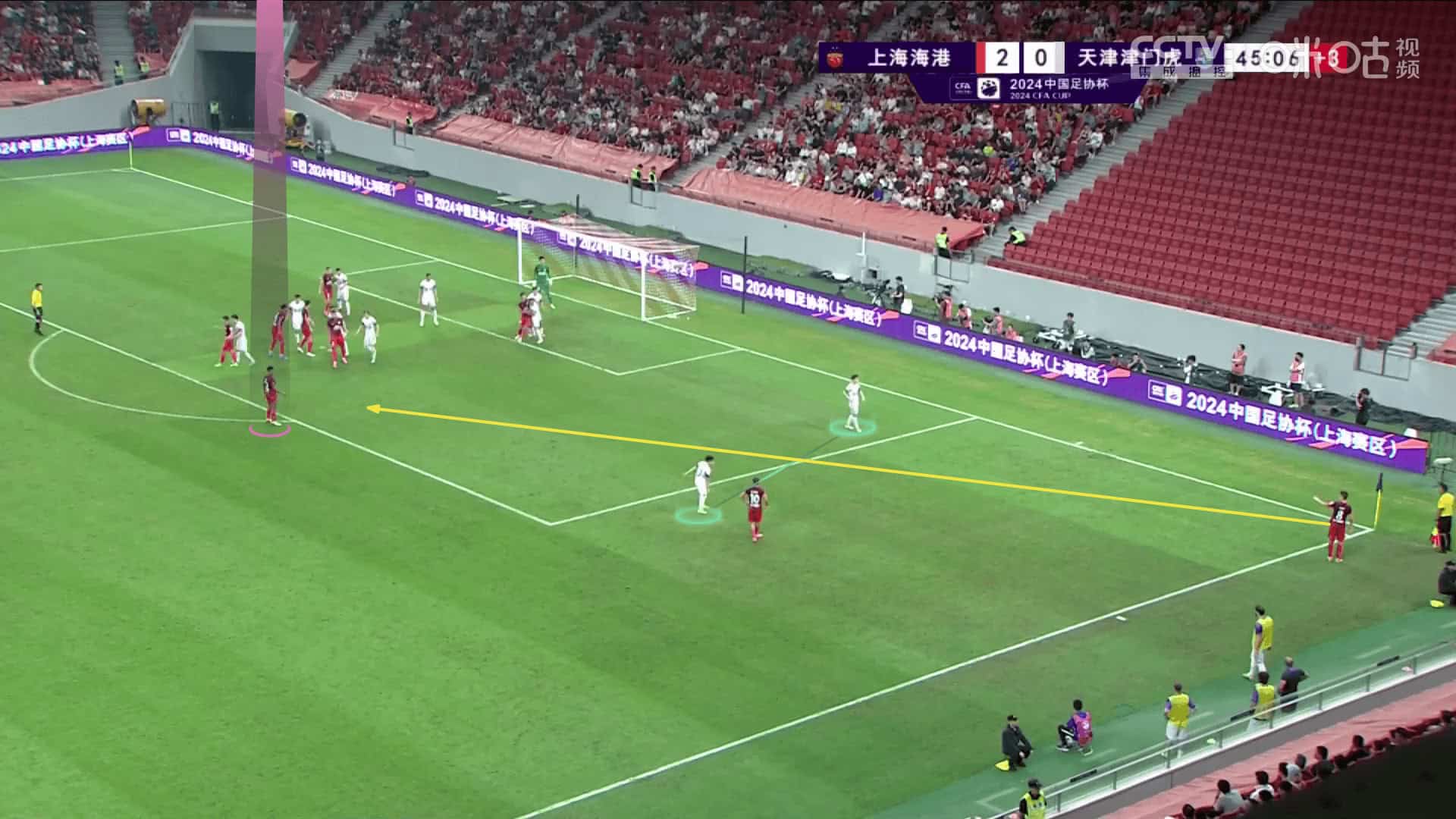
The plan works, and it ends with a dangerous chance, as shown below.
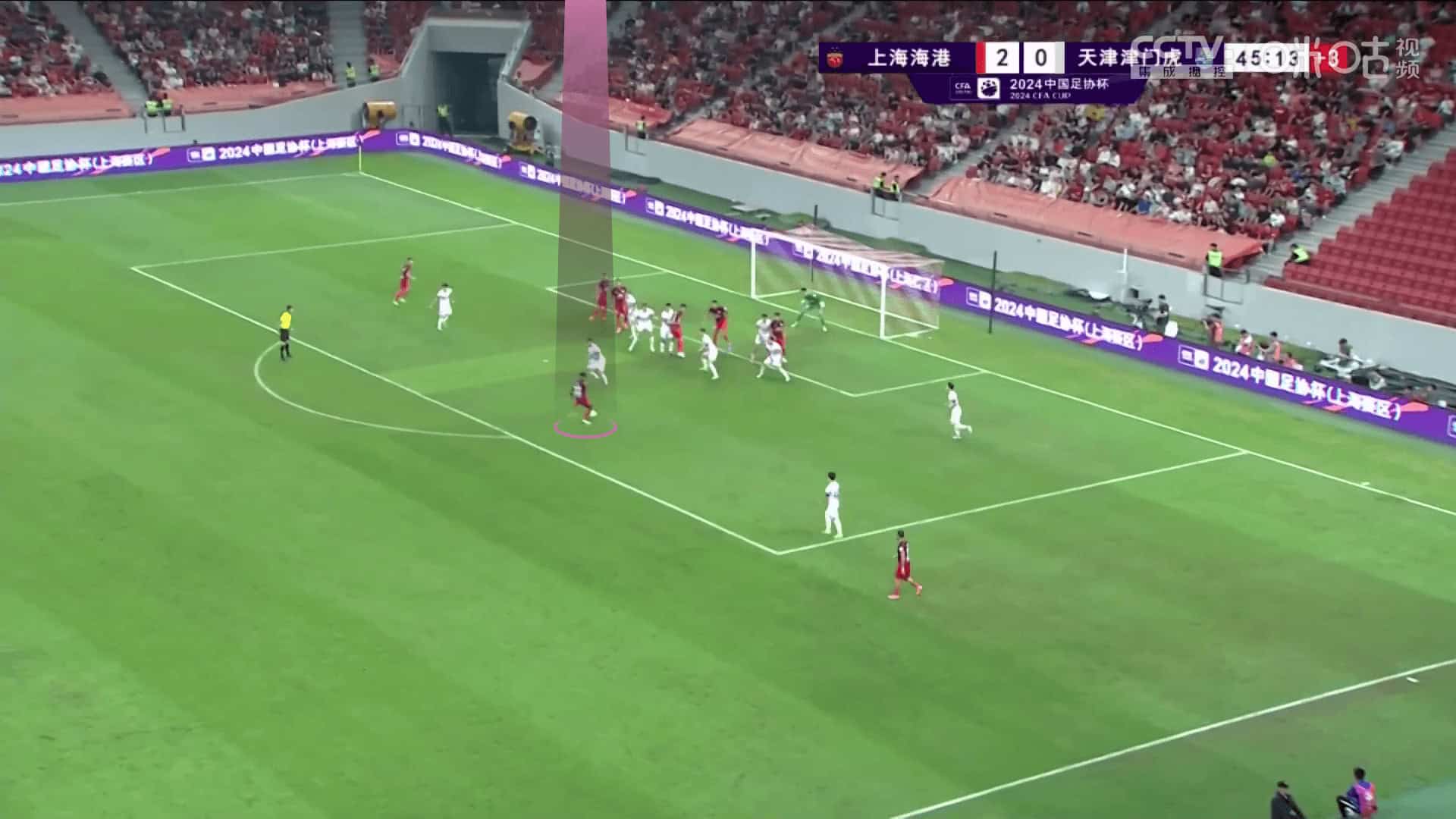
Conclusion
In this analysis, we have highlighted how corner kicks have been a key source of Shanghai Port’s exceptional offensive strength, which could potentially be decisive in determining the outcome of the league battle with their main competitor, Shanghai Shenhua.
In this set-piece analysis, we have discussed how Oscar has been a decisive factor in executing corner kicks with high quality, which has contributed to their superiority in this aspect.
His ability to implement a variety of strategies — such as targeting the area near the near post, executing deceptive runs to target the near post, or employing short corner routines to aim directly at the rebound area — has significantly enhanced their effectiveness.






Comments